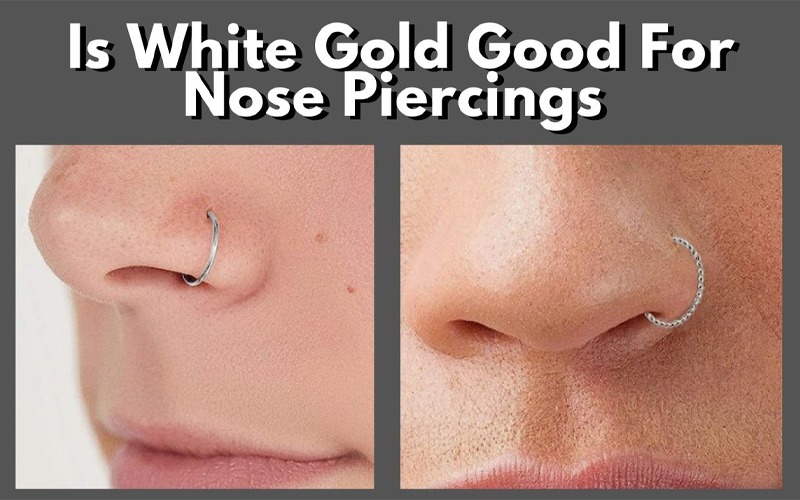Stretched Septum Basics
The septum is the thin wall of cartilage and bone that divides the two nostrils. When the septum is stretched, it means that the tissue has been expanded or elongated beyond its normal size.
Stretched septum is a common condition among people who practice body modification, particularly those who engage in nose piercing.
Stretched septum can occur naturally as a result of aging or trauma, but it is most commonly done intentionally for aesthetic reasons.
People who stretch their septum may use a variety of methods, including tapers, weights, and plugs, to gradually increase the size of the piercing.
It is important to note that stretched septum can have potential risks and complications. The tissue can become thin and fragile, leading to increased susceptibility to infections.
Additionally, stretched septum can cause breathing difficulties, particularly if the septum is stretched too far or if the piercing is not properly maintained.
To prevent complications, individuals should seek professional help when stretching their septum. They should also maintain proper hygiene and avoid using unsanitary tools or materials.

Cultural Significance
Historical Background
The practice of stretching the septum has been a part of various cultures for centuries. In ancient times, it was a symbol of status, wealth, and power.
For example, in some African tribes, a stretched septum was seen as a sign of beauty and maturity. In South America, the Incas and Aztecs used septum stretching as a form of religious and cultural expression.
Modern Practices
Today, stretching the septum is still a popular practice among certain subcultures. It is commonly associated with the body modification community, where individuals use various methods to stretch their septum to larger sizes.
Some people choose to stretch their septum as a form of self-expression and individuality, while others do it for aesthetic reasons.
In addition to the body modification community, stretched septums have also gained popularity in the fashion industry. Some designers have incorporated septum rings and other jewelry into their collections, creating a trend that has been embraced by many.
Procedure and Safety
Preparation
Before getting a stretched septum, it is important to choose a reputable piercer who uses sterile equipment and follows proper hygiene practices. The piercer should also have experience in performing stretched septum procedures.
It is recommended to avoid alcohol and blood-thinning medications for at least 24 hours before the procedure to reduce the risk of bleeding.
The piercer will clean the area and mark the spot where the piercing will be placed.
Aftercare
After the procedure, it is important to follow proper aftercare instructions to prevent infection and promote healing. The piercer will provide specific instructions, but generally, the following steps should be taken:
- Clean the piercing twice a day with saline solution.
- Avoid touching the piercing with dirty hands.
- Avoid swimming or soaking in water for at least two weeks.
- Avoid using makeup or other products on or near the piercing.
- Avoid changing the jewelry for at least six weeks.
Jewelry Options
Materials
Stretched septum piercings can be adorned with a variety of materials. The most common materials used for jewelry are surgical steel, titanium, and gold.
These materials are hypoallergenic and safe for long-term wear. However, some people may prefer organic materials such as wood, bone, and horn.
It’s important to note that organic materials may require more care and maintenance to prevent cracking and warping.
Styles
There are several styles of jewelry that can be worn in a stretched septum piercing. The most popular style is the captive bead ring, which features a small bead that is held in place by the ring’s tension.
Another popular style is the circular barbell, which features a curved barbell with a ball on each end.
For a more decorative look, people may opt for a septum clicker, which features a hinged design that clicks into place. Other styles include plugs, tapers, and tusks.
When choosing jewelry for a stretched septum piercing, it’s important to consider the size and shape of the piercing.
Jewelry that is too heavy or too tight can cause discomfort and irritation.
It’s also important to choose jewelry that is appropriate for the occasion. While large, ornate jewelry may be suitable for a night out, more subtle jewelry may be more appropriate for a professional setting.
Health Considerations
Risks
Stretching a septum can pose certain risks to an individual’s health. One of the main concerns is the potential for infection.
When the skin is stretched, it can become more susceptible to bacteria and other harmful microorganisms. Therefore, it is important to keep the area clean and sterile to prevent infection.
Another risk associated with stretched septum is the possibility of permanent damage to the tissue.
If the stretching is done too quickly or forcefully, it can cause tearing or scarring of the skin. This can result in a loss of sensation or permanent disfigurement.
Healing Process
After stretching a septum, it is important to give the body time to heal. The healing process can take several weeks or even months, depending on the extent of the stretching.
During this time, it is important to avoid touching or pulling on the jewelry, as this can cause further damage to the tissue.
To promote healing, it is recommended to clean the area regularly with saline solution or a mild soap. Applying a warm compress to the area can also help to reduce swelling and promote blood flow.
Legal and Ethical Issues
Stretched septum piercings have been a popular choice among body modification enthusiasts for years. However, there are several legal and ethical issues that arise when it comes to this type of body modification.
Legal Issues
In some states and countries, there are laws and regulations in place that prohibit certain types of body modifications.
For example, in some areas, it is illegal to perform piercings on minors without parental consent. Additionally, some employers may have policies in place that prohibit visible body modifications such as stretched septum piercings.
Ethical Issues
There are also ethical considerations when it comes to stretched septum piercings. Some people argue that modifying one’s body in this way is a form of self-expression and should be protected as a basic human right. Others may argue that it is a form of self-harm or mutilation and should not be encouraged.
Furthermore, there is a concern about the potential harm that can come from stretched septum piercings. If not done properly, these piercings can lead to infections, scarring, and other complications.
It is important for individuals to understand the risks involved and to seek out a reputable piercer who follows proper safety procedures.





